We all know the old saying, “East is east and West is west and never the twain shall meet”. The dairy business has traditionally seen irreconcilable differences in the areas of commercial dairy vs. registered dairy; corporate farms vs. family farms; genomics vs. proven; corporate owners vs. family ownership; employee goals vs. owner strategies. Of course, it’s the exceptions to the rule that show us how to push the envelope and create new successes in an industry that is under constant pressure to be profitable and sustainable. John Andersen brings many of these disparities together in his passion for dairying and in doing so is building a playing field most dairy breeders can only dream of.
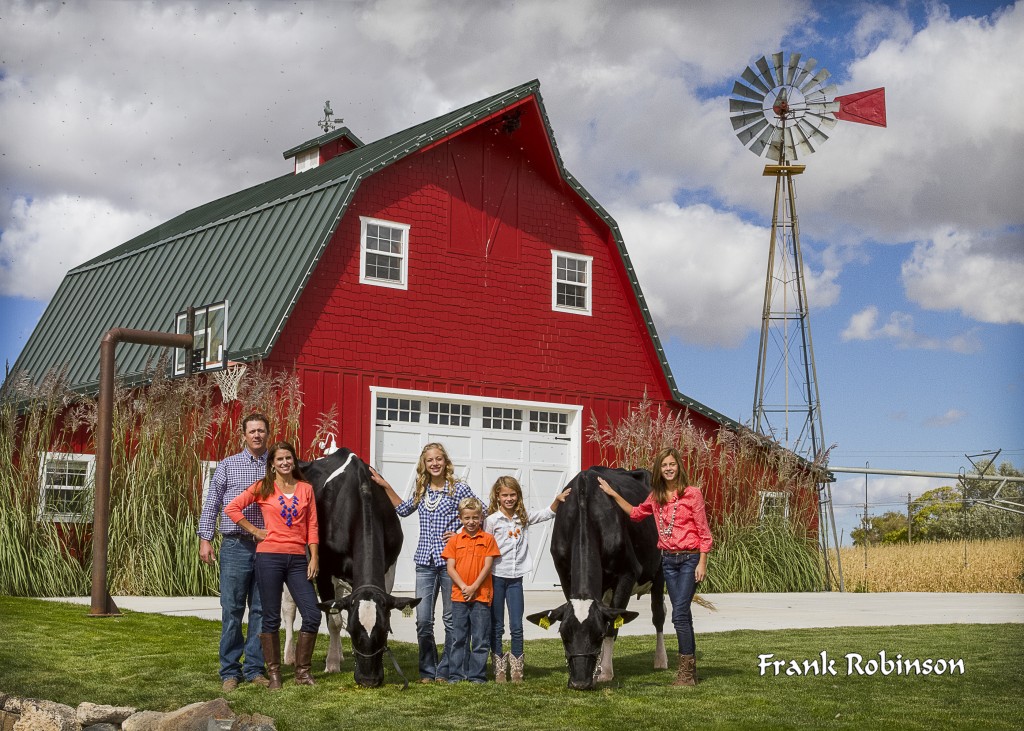
John & Caroline Andersen Family
Taking Care of Business
Some might see it as trying to keep too many balls in the air at once or a tricky balancing act but for John it is neither. He sees running a thriving commercial herd and breeding elite genetics as two sides of the same dairy business coin. As Manager at Double A Dairy in Jerome, Idaho he is more than comfortable with a two pronged approach. “I do believe that it is possible to have the best of both worlds and this is what we are trying to accomplish.” John feels the key to success for both visions is still built on the same firm foundation. “Have a passion for whatever it is that you choose to do. Do something that you look forward to getting up in the morning and going to work.”
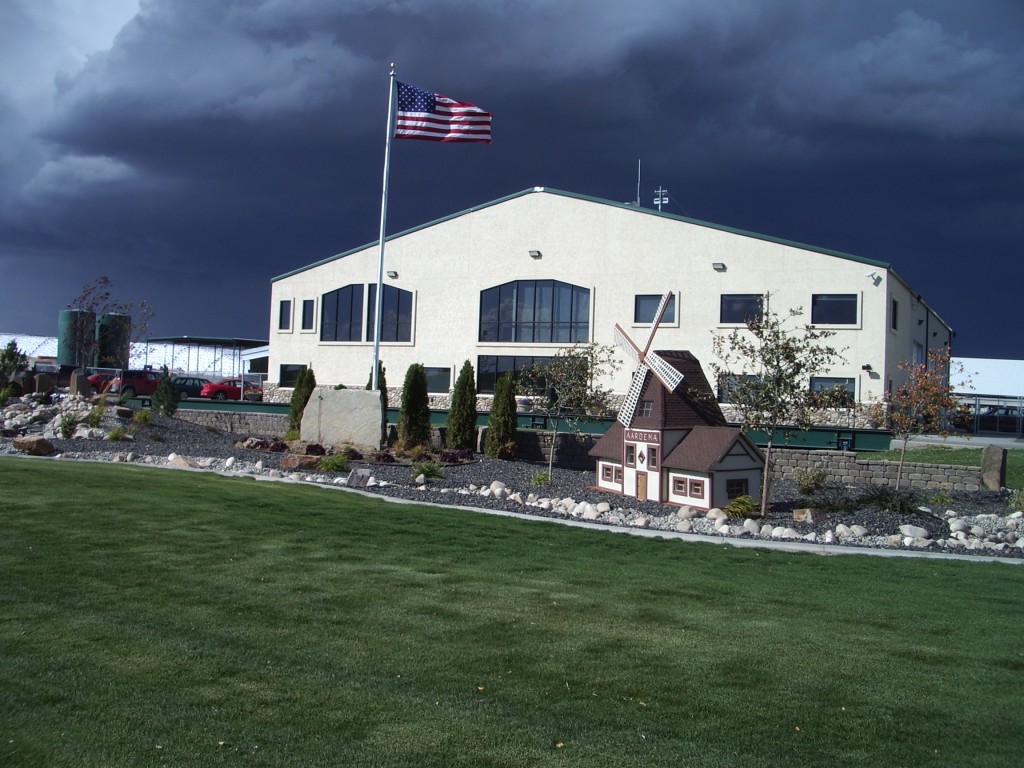
Double A Dairy
Genomics Is the Game Changer
The Double A Dairy in Jerome Idaho is owned by the Aardema family, and John Andersen is the manager. The 13000 cow Double A Dairy is recognized as one of the largest users of genomic tests on a commercial scale “Genomics has changed the game and whether you like it or not, I believe it is here to stay and will continue to become more reliable.” says John Andersen who, with his team runs genomic tests to sort out high and lower end genetics. “It is not the end all say all, but it is an important tool that gives us additional information to make decisions in our day to day business.”
Lifelong Learning and Earning In the Dairy Industry
Although the ready acceptance of genomics as a tool for a commercial dairy may seem somewhat unexpected, it’s not out of line with John’s dairy background. “I grew up on Seagull Bay Dairy (500 cows), our family dairy operation located in American Falls, Idaho. I went to college at BYU (Brigham Young University) in Provo where I got my degree in Ag Business and a minor in Business. While at college, I worked as a herdsman at the University’s 600 cow dairy where I helped manage the breeding and Embryo Transfer program. We worked with a good number of high index cows and sold a fair number of bulls to stud from the University herd. After my Junior year of college, I spent a full summer in the central valley of California working as an intern with Monsanto. It gave me the opportunity to spend time on a number of different large dairies. After graduation, I returned home to manage Seagull Bay beginning in January of 2000.” It was an enjoyable way to develop a career and John was evidently gathering invaluable experience. (Read more: Charting the Right Course at Seagull Bay Dairy)
DOUBLE A DAIRY. Specialized and Organized
John explains how things changed in 2005. “After spending five years at Seagull Bay, I took the opportunity to work with the Aardema Group in Jerome, Idaho. We milk a total of 26,000 cows on six different facilities. More than half of the cows are milked at Double A dairy (14,000 Holsteins) and the remainder of the dairies milk Jerseys. 70% of the cows at Double A are housed in freestall barns while the other 30% are housed in open lots with shades. Double A has four Double 50 parallel milk parlors. We also have a centralized calving facility dedicated to caring for dry and close-up cows and heifers. All heifer calves are kept and raised at our calf ranch up to six months of age and then sent to our heifer feed lot where they are housed up to a month before calving when they are send back to the calving facility.”
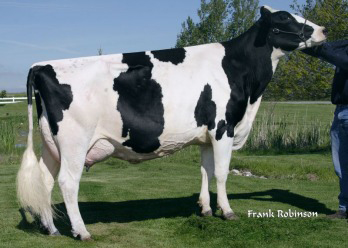
Seagull-Bay Manat Mirage-ET EX-90 EX 93 MS GMD DOM
Mirage has 1 EX and 26 VG daughters
Granddam of Roylane Socra Robust #2 NM proven sire
MIRAGE and MIRROR. Reflections on Building Breeding Success
Over time, breeding cattle provides its own reward system since your successes meet you (or not) in the milkhouse every day. John Andersen looks at two who rose to the top of his list. “After returning home from college to manage Seagull Bay, I had the opportunity to breed Seagull-Bay Manat Mirage-ET and her daughter Seagull-Bay Oman Mirror-ET. Mirage was flushed to Oman as a two yr old. She was a medium sized cow with an excellent mammary and great feet and legs. High production was a strength of the Minnow family. Oman brought many of the health traits and calving ease that the breed was desperate for at the time and so it seemed like a logical mating. Mirror was purchased by Roylane in our 2005 sale and went on to have as big an impact in the genomic era as any cow I can think of through daughters, granddaughters, and great granddaughters that have topped the CTPI cow lists and GTPI heifers lists.” And John sees that this family will make more contributions in the future. “Mirror’s son Robust and grandson SuperSire will continue to influence the breed for years to come. Last year, I had the opportunity to purchase Mirror back from Roylane, and she is now housed at Double A. Even at nearly ten Yrs old, she continues to make high testing offspring. She recently had a Deductive bull go to Semex who is +2403 GTPI, and she just had a daughter, Triplecrown Alright 756, sired by Alright come back at +2537 GTPI +868 NM 80F 64P. Mirror also has a granddaughter in the Double A herd sired by Niagra and out of the EX full sister to Robust that is EX-92 as a 3 yr old and was the 1st place Sr. 3 at the Utah State show and 3rd place Sr. 3 at the Western Spring National.”
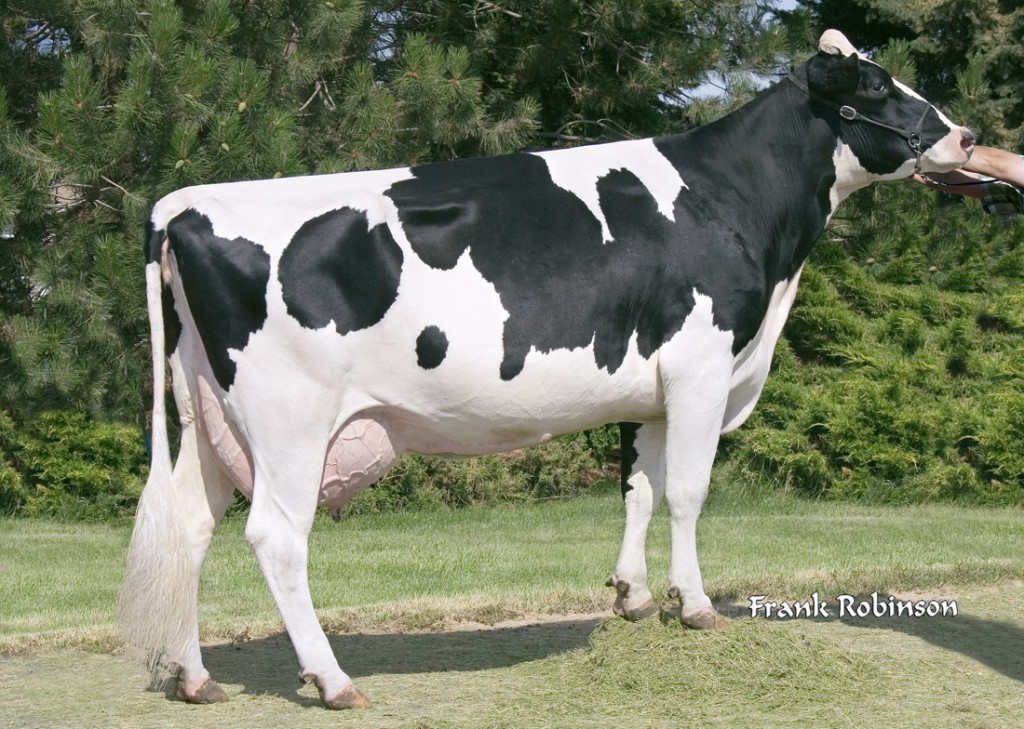
Seagull-Bay Oman Mirror VG-86 DOM
Dam of Roylane Socra Robust
TRIPLE CROWN GENETICS. Launched in 2005
It is obvious that John Andersen enjoys the challenges inherent in running a large commercial operation and encourages others to take the same opportunity. “There is plenty of demand in the dairy industry for leaders with good work ethics and common sense.” The triple talents of ethics, common sense and passion have served John Andersen well for several decades to this day and in 2005 he further rounded out his dairy breeding vision. “Triple Crown Genetics came about when I left Seagull Bay in 2005, I wanted to stay involved in the registered cattle and genetics side of the business and continue to work with elite genetics. Triple Crown Genetics was formed in September of 2005 as a partnership between myself, Seagull Bay, and Jordan Leak. In 2010, I took over 100% ownership of Triple Crown and all cattle that I own are registered under the Triplecrown prefix.”
COWS AND BULLS. The Highlights.
There have been special cows to highlight John’s breeding journey.
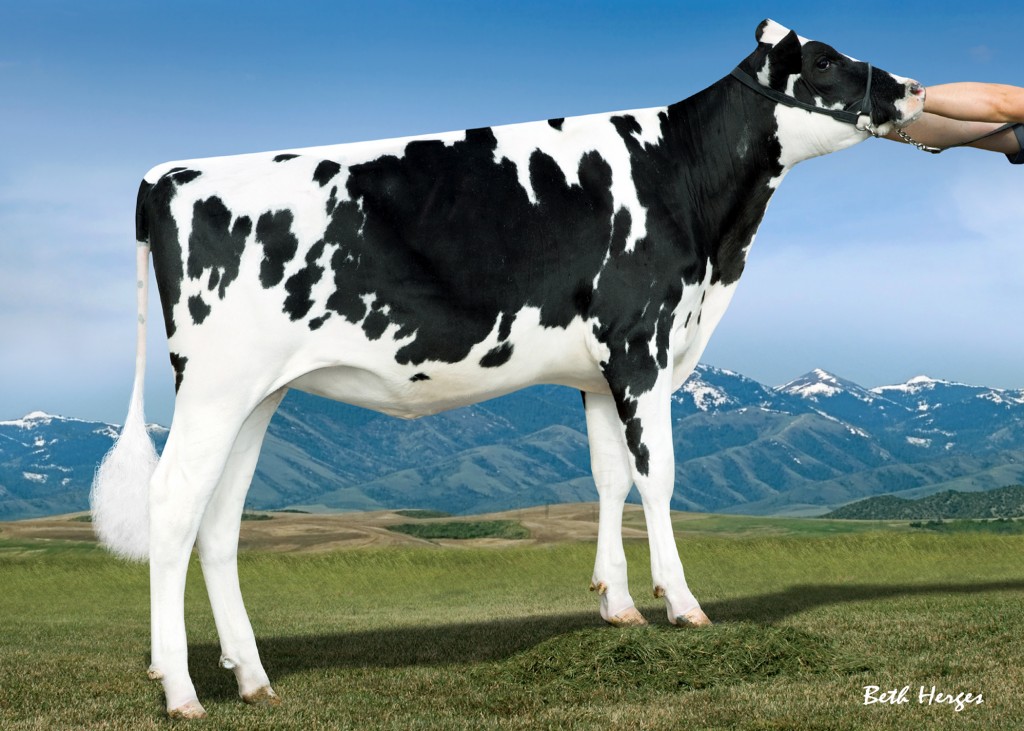
Triplecrown Uno 602-ET
Numero Uno x T-C-G Jeeves Milley-ET EX-90 x Seagull-Bay Lauden Megan-ET VG-87
+2428 GTPI, +88 Fat +32 Protein +2.53 PTAT
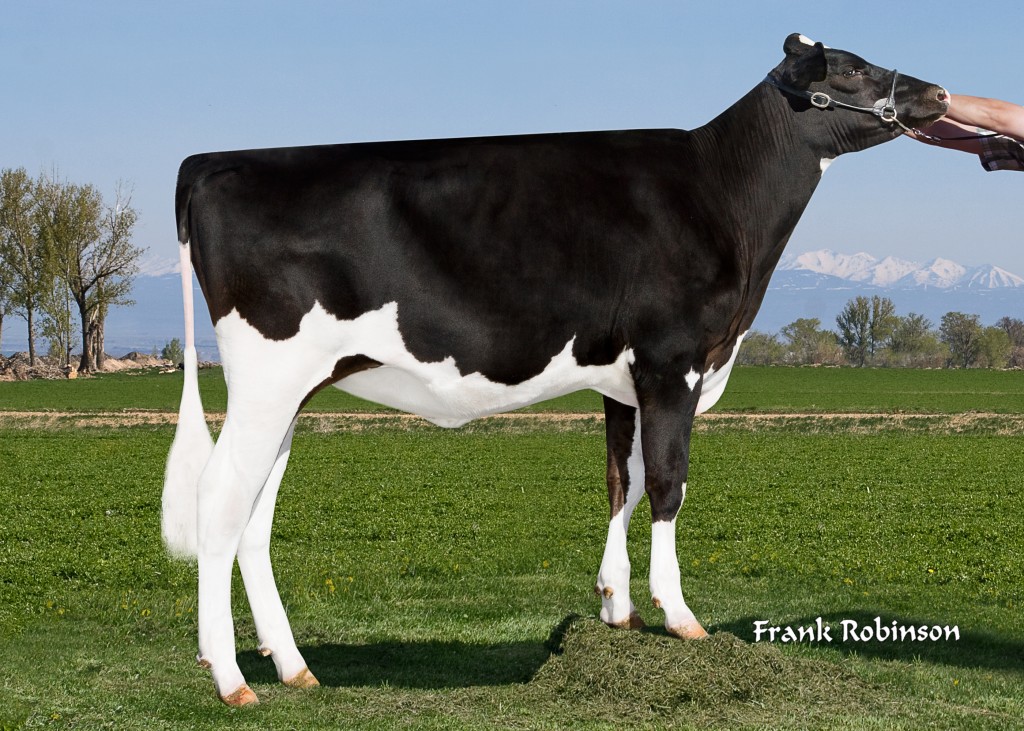
SEAGULL-BAY SH MAUREEN-ET
Numero Uno x Ammon-Peachey Shauna-ET VG-87
+2390 GPTI +1187 Milk +3.08 PTAT
- TRIPLECROWN JACEY 556-ET (Jacey x Jeeves x Laudan back to Minnow family)
- SEAGULL-BAY MOGUL 1723-ET (Mogul x Observer x Shottle x Toystory x Oman Mirna)
- AARDEMA FREDDIE 1994-ET (#1 Freddie in the breed at +2414 GTPI)
The Genomic Bull Story at Double A
“I started using high genomic bulls at about 40-50% of our usage as soon as they were made available and was at 99% within about two years.” I will occasionally go back and use a proven bull that I missed as a genomic bull if I really like him. Massey was an example of this. Freddie has been one of my favorite bulls that I have used in the past five years and am excited about the Robusts that we are now milking as well as the Moguls that are starting to freshen now. We currently genomic test the top 25% of our heifers each month based on parent average (about 150 head/month).
We then select a few elite females each month that will enter our IVF and flush program based on genomic results. We do OPU on farm every Monday with 10-12 Holstein and Jersey donors. All collection and transfers are done in-house, and we ship Oocytes to a lab for fertilization. We are considering to start genomic testing all new females in the next couple months.
“I feel that we will make faster genetic improvement by using groups of high genomic bulls than we would by using only high proven sires, although if someone isn’t comfortable using the genomic bulls, there is nothing wrong with using good proven sires.” There is not any one trait that will keep a bull off of the list if he is good enough in other areas. Traits I look at closely that I am trying to maintain or improve in the herd: Milk, # Protein, PL, DPR, SCS, CE, UDC, FLC and Stature. I try to have different sire stacks among the group of bulls we are using.”
Sires being used on the herd currently: Troy, Stoic, Emerald, Speaker, Pure, El Bombero, SuperSire, Yoder, Jacey, Tango, Deductive. Current IVF mating sires: Troy, Pure, Yoder, Silver, Delta, JoSuper, Desired, Powerball, AltaSpring. John takes a look further back in the breeding program. “A few of the bulls that have had a big impact on our herd pre-genomic era were Oman, Die Hard, Boliver, and Shottle to name a few.”
GREEN LIGHTS and ONE RED FLAG
I like the fact that the breed is putting more emphasis on production in the TPI formula, but would prefer that some of the emphasis were taken away from PTAT rather than some of the health traits. The main problem I have with PTAT is that I feel it is too heavily correlated with stature. Stature is a trait that continues to increase at an increasing rate within the Holstein breed, and I think it is a must that we slow it down considerably.
“My concern is that too many of the top gTPI bulls right now are over 3 pts on stature and to me this is a red flag.”
“I have always said that there is no right or wrong way to breed cows, but you need to have an end goal in mind.”
Quite often you get the best understanding of what motivates a particular dairy breeder, by tuning in on the advice they give others. John Andersen has a well-thought out guidance to share. “If you want to market bulls, heifers, or embryos, it is important to remember what the market is demanding. My opinion is that the bull market is what drives the registered genetics market, and the producers that are purchasing the majority of the semen are driving the bull market.” Further emphasizing the need for keeping the end goal in mind, John refers to his passion for the show ring. “We like to show as a family”, so on occasion I will make a mating with the goal of making a show winner. Some of those sires that I use with the show mating in mind are bulls that I would never use in my commercial herd.”
The Bullvine Bottom Line
“Technology has continued to advance at a rapid rate and it has changed the way we dairy and breed cattle.” Having said that, John doesn’t feel that it is time for anyone to rest on their dairy laurels. “We need to continue to help make improvements to the Holstein cow so that she is the cow that dairymen feel is the most profitable to milk.” Thank you John Andersen and congratulations to Double A Dairy and Triple Crown Genetics for the fine examples of doing exactly that!
Get original “Bullvine” content sent straight to your email inbox for free.











